―
Emperor Penguins are disappearing from our planet
―
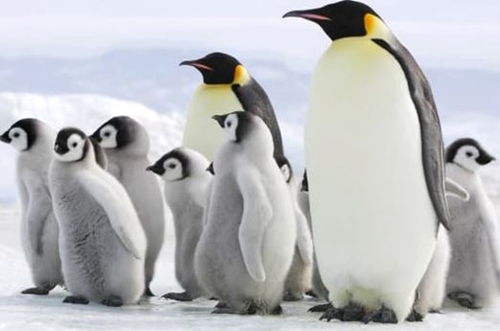
The Emperor Penguin is the largest penguin in the world.
Average height 114 cm (45 inches) and weight up to 40 kg (88 lbs). Currently, there are 61 Emperor Penguin colonies in Antarctica, with an estimated 625,000 to 650,000 inhabitants.
Emperor penguins lay eggs and go out to sea in search of food. The males incubate the eggs between their legs for two months, enduring bitter cold. And the female and male take turns rearing the young. The documentary film March of the Penguins has become famous.
The Emperor Penguin, which has survived and overcame such a harsh environment, is now in danger of disappearing from the earth forever.
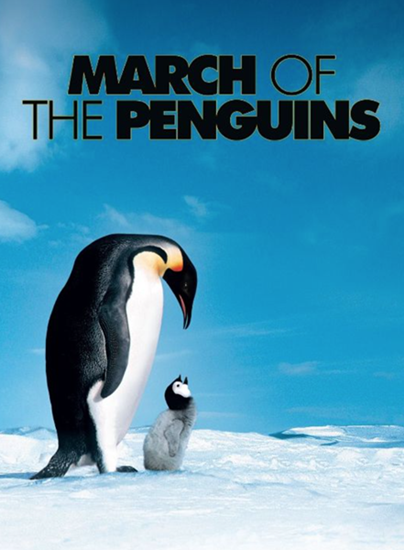
On the 25th, the US Fish and Wildlife Service (USFWS) listed the Emperor Penguin as an endangered species.
https://www.fws.gov/press-release/2022-10/emperor-penguin-gets-endangered-species-act-protections
The USFWS estimates that the emperor penguin population will decline by as little as 26% and as much as 47% by 2050 as sea ice disappears due to climate change. Sea ice is an important habitat for emperor penguins to find food and shelter from dangerous enemies.
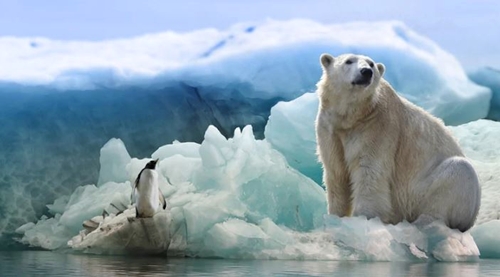
The decline of krill, a main food source, caused by ocean acidification, also threatens the survival of Emperor penguins. The Emperor population has declined to barely half from the 1970s.
In 2016, when the sea ice melted early, 10,000 young pups not yet prepared to swim drowned.
―
69% of wild animals have disappeared in half a century
―
The changes affect not only Emperor penguins. Looking further afield, more and more species are vanishing. On the 13th the World Wildlife Fund (WWF) released "Living Planet Report 2022."
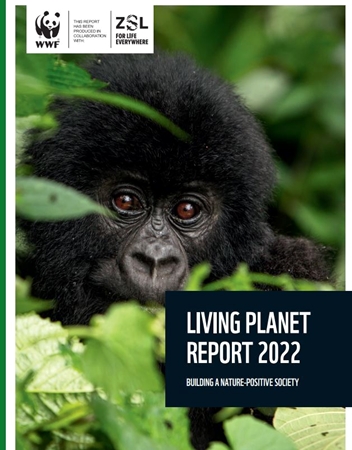
https://www.worldwildlife.org/pages/living-planet-report-2022
The WWF publishes a biennial biodiversity and ecosystem health survey, including analyses of the world's population of approximately 32,000 species of mammals, fish, reptiles, birds and amphibians.
The findings are more than shocking. From 1970 to 2018, the populations of all wildlife monitored declined by an average of 69%.
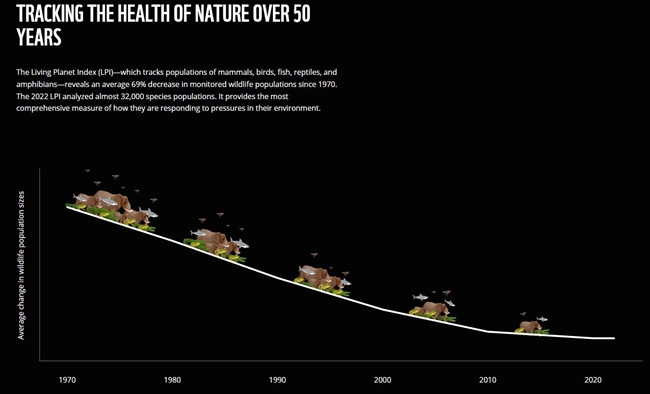
Tropical regions such as the Amazon, the coasts of Latin America, and the Caribbean showed ominous decline, where the number of wild animals decreased by an average of 94% during the same period. In Africa and Asia and the Pacific region, more than half of the wild animals disappeared, accounting for 66% and 55%, respectively.
The species that saw the biggest decline were freshwater species populations. The total population of freshwater species has declined by an average of 83%.

(Cycad fern tree)
In addition, the cycad, a primitive fern plant species, is at gravest risk of extinction, while corals and amphibians are showing the fastest decline.
* Species: A group of similar organisms that can interbreed
* Population: A group of a single species that inhabits the same geographic area.
-WWF KOREA material -
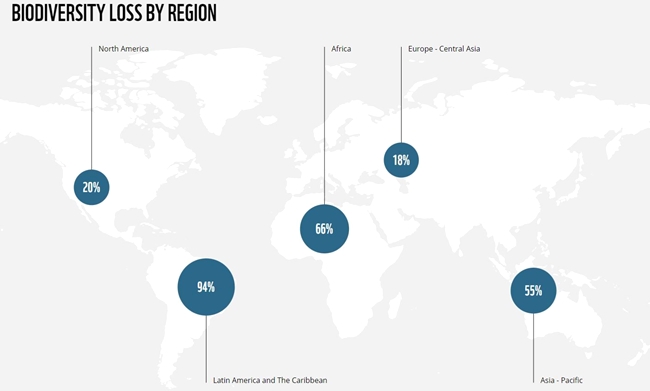
(Status of biodiversity loss by region)
The report identified habitat degradation and loss, overuse of resources, invasive species, environmental pollution, climate change and disease as the main causes of global wildlife loss.
Especially in the case of migratory fish, where 75% of the population has declined, habitat loss and new obstacles blocking migration routes account for half the decline.
The report maps the regions with high extinction threat, with Southeast Asia being the region with the highest geographic risk of extinction. In addition, the polar regions, the eastern coast of Australia and South Africa have been shown to be very likely to be affected by climate change.
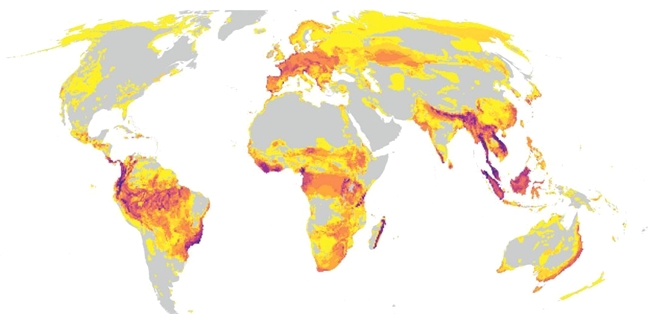
―
Humans are overusing permitted natural resources
―
The report says that demand for energy and raw materials has increased significantly over the past 50 years, as the world's population has doubled and global economy and international trade have quadrupled and tenfold, respectively. As economic activity intensified, environmental damage correspondingly increased. This can be explained by the biocapacity of the Earth and the ecological footprint of phosphoric acid.
▲ ‘Biocapacity’ refers to the amount of resources, such as water, air, and soil, that the earth can regenerate and purify in one year. In the 1960s, only three-quarters of the earth's recoverable ecological resources were used, but with rapid industrialization in the 1970s, human consumption of ecological resources exceeded nature's regenerative capacity, and as of August 2, 2017, humans have exceeded the limits of annual resource consumption that the Earth can accommodate each year.
▲ ‘Ecological footprint’ The ecological footprint is the human demand upon the biocapacity. The current standard of area that the earth can handle is 1.6ha per person, but if we demand an area footprint higher than this, it can have a big negative impact on environmental issues.
According to the report, humans are currently using at least 75% more of Earth's nature, which is equivalent to living on 1.75 Earths.
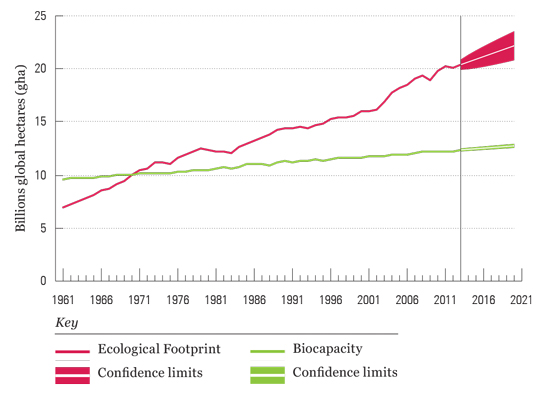
The map below shows consumption in Ecological Footprints per capita by country.
Within the natural range that the Earth can support, an acceptable ecological footprint per capita is 1.6 global hectares, meaning that many nations are using Earth's resources beyond this range.
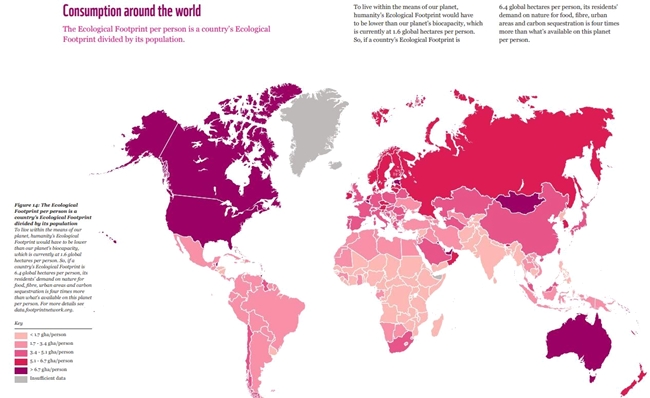
(Ecological footprint per nation per capita: the darker the red the more earth's resource capacity is exceeded.)
―
Towards a Nature-Positive Society
―
How can we save endangered species? The international community has set the answer as ‘Nature-Positive.’
‘Nature-Positive’ means to stop and reverse natural loss and to strengthen the resilience of the earth and society. For global goals in the natural field, such as the carbon-neutral goal in the climate field, each sector such as government, business, and civil society must subscribe to the pledge and joint in an international effort to carry out it together.
Just as we set quantified carbon reduction targets for Net Zero, biodiversity should also have measurable and timely targets.
Nature-positive is necessary because, firstly, nature has been severely damaged and will disappear at an ever-faster rate in the future, requiring bold goals; and secondly, it gives us hope that nature can recover quickly when given the opportunity.
WWF emphasizes that a fundamental and holistic realignment of paradigms, goals and values across technological, economic and social factors can transform biodiversity decline from halting to recovery.
Fortunately, leaders from over 90 nations pledged to reverse the trend of biodiversity decline by 2030 through the 'Leaders Pledge for Nature (LPN)', and the G7 leaders are also realizing a world in a nature-positive state. They pledge together their firm intention to carry it out.
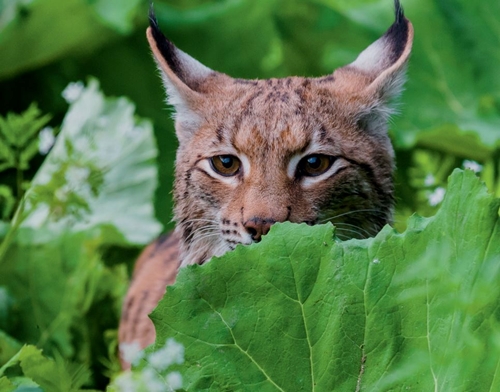
(Photo source: WWF)
* Nature Positive: A global restoration goal to reverse the trend of biodiversity decline by 2030, to reverse the flow of natural loss and to protect nature.
If the international community responds in unison, the natural net decline will turn positive from 2030, reaching Nature Positive, and a full recovery can be expected by 2050.
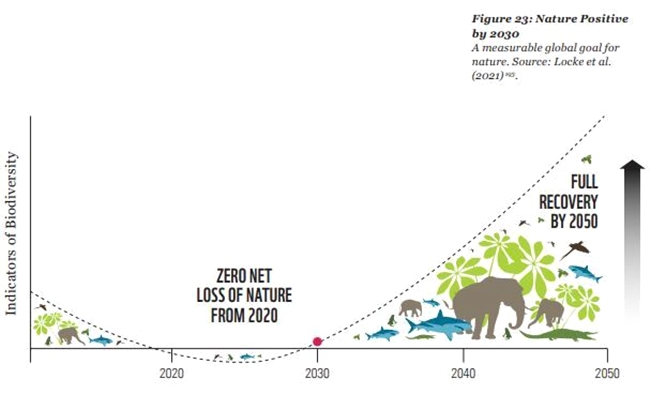
―
All in all, 1.5oC for nature and mankind
―
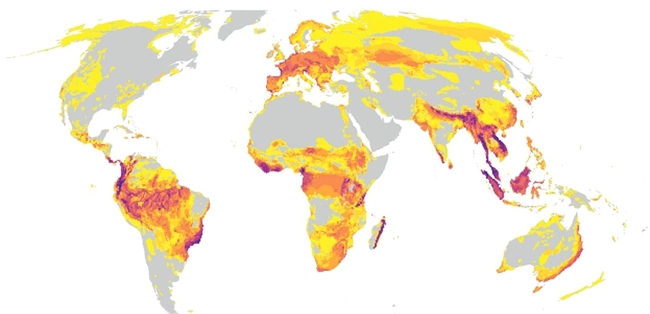
(Estimation of biodiversity loss due to temperature rise as compared to pre-industrial levels)
The threatened extinction of the Antarctic Emperor penguins and tropical wildlife stands as a warning to humans about climate change from animals living on both extremes.
“Climate change is having a tremendous impact on species around the world, and this also serves as a call to action,” said Martha Williams, Director of the US Fish and Wildlife Service (USFWS).
It seems that the path we must take has been decided for us. Efforts to peg climate change at 1.5℃ and efforts towards Nature Positive are not different – they will help to preserve biodiversity as well as the survival of mankind.
Written by Sharon Choi
Director of Planning
Sunhak Peace Prize Secretariat

